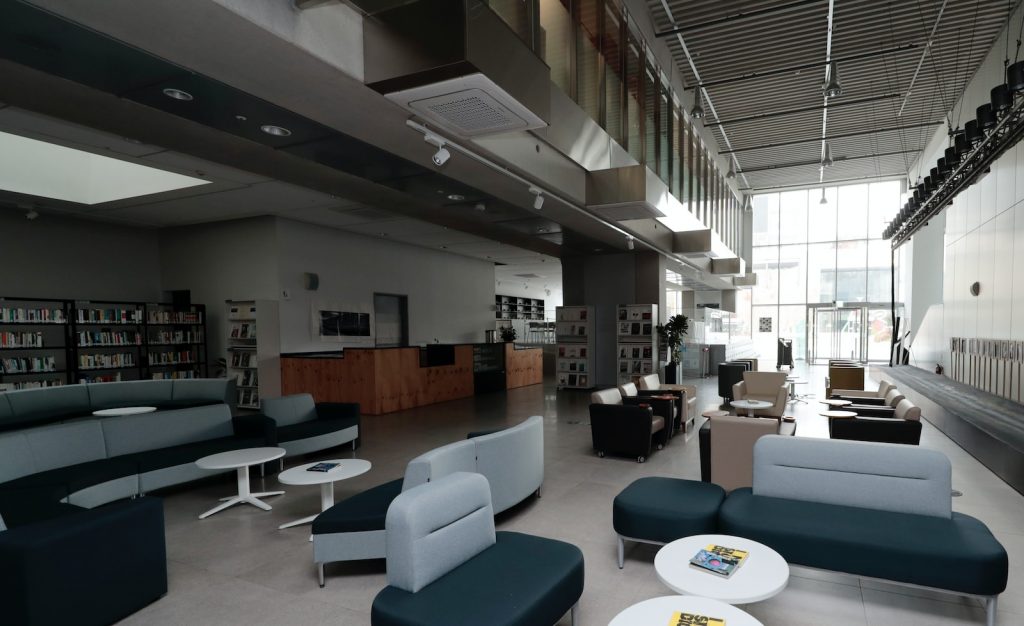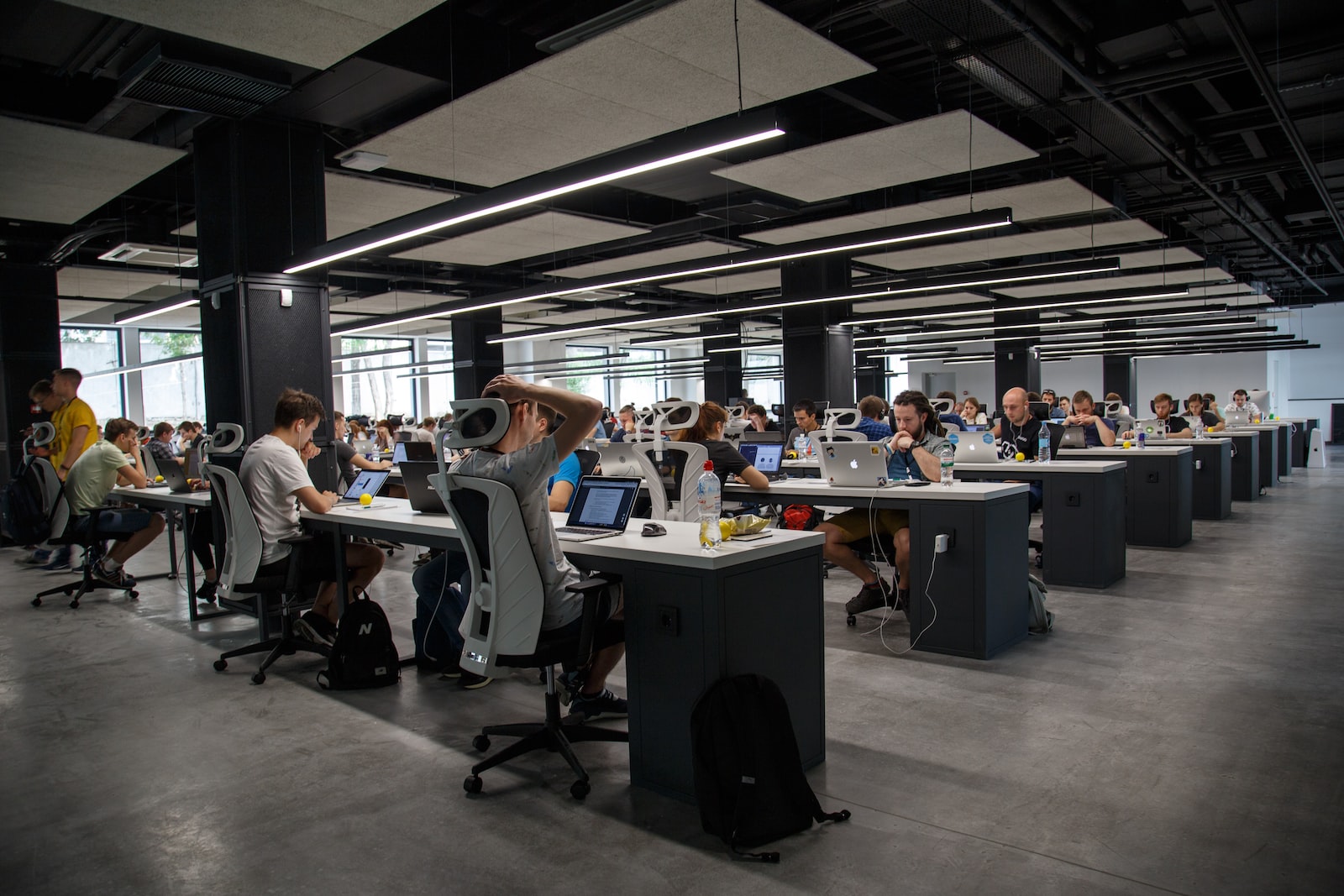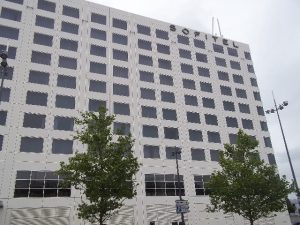Creating a healthy work environment in commercial buildings is essential for the well-being of employees and the success of a business. Poor indoor air quality, lack of natural light, and inadequate ergonomics can all contribute to poor health and decreased productivity. In this blog post, we will explore five key areas of commercial building design that can have a significant impact on employee health and well-being: indoor air quality, natural light, access to nature, ergonomics, and noise control. By addressing these areas, commercial building owners can create a healthier and more productive work environment for their employees.
It’s important to note that the design of commercial buildings can have a profound impact on the health and well-being of employees. The World Green Building Council states that “buildings can play a critical role in promoting physical activity, healthy diets, and mental well-being, as well as reducing the risk of chronic diseases such as obesity, diabetes, and heart disease.” By creating a healthy work environment in commercial buildings, building owners can not only improve the health and well-being of their employees, but also improve their bottom line.
Indoor Air Quality
Indoor air quality can have a significant impact on employee health and productivity. Studies have shown that poor indoor air quality can lead to increased absenteeism, decreased productivity, and a range of health problems such as headaches, allergies, and respiratory infections. According to a study by the Environmental Protection Agency, indoor air pollution can be up to five times higher than outdoor pollution.
To improve indoor air quality in commercial buildings, it’s important to use air purifiers, increase ventilation, and reduce the use of chemical cleaners. Building owners can also consider using green cleaning products and promoting the use of natural ventilation like opening windows when weather permits. Additionally, regular maintenance and cleaning of HVAC systems can also help to improve indoor air quality.
One way to improve indoor air quality is by incorporating plants into the design of the building. According to a study by NASA, plants can remove up to 87% of air toxins in 24 hours. Not only do plants improve indoor air quality, but they also have a number of other benefits such as reducing stress, increasing productivity, and improving overall well-being. Building owners can incorporate plants by adding living walls, green roofs, or by simply adding a few potted plants to common areas.
Natural Light

Natural light is essential for human health and well-being. Studies have shown that exposure to natural light can improve mood, reduce the risk of depression, and increase productivity. According to a study by the National Renewable Energy Laboratory, natural light can increase productivity by up to 20%.
To increase natural light in commercial buildings, building owners can install skylights, add windows, and use reflective surfaces. Also, it’s important to consider the layout of the space and positioning of the desks to ensure that the most amount of natural light reaches the employees. Building owners can also take advantage of natural light by incorporating light-colored walls, flooring, and ceilings, which can help to reflect and distribute natural light throughout the building.
One way to increase natural light in commercial buildings is by using a technique called daylighting. Daylighting is the practice of designing buildings to maximize the use of natural light. This can be achieved by incorporating skylights, large windows, and strategically placed mirrors. According to the American Institute of Architects, daylighting can reduce energy costs by up to 75%. Not only is daylighting good for the environment, but it also has a number of benefits for employee health and well-being.
Access to Nature
Access to nature can have a significant impact on employee health and well-being. Studies have shown that access to nature can reduce stress, improve cognitive function, and increase job satisfaction. According to a study by the University of Exeter, employees with access to nature reported a 15% decrease in stress levels.
To incorporate nature into commercial buildings, building owners can add plants, create outdoor spaces, and incorporate natural materials into the design. For example, using wood and stone materials, creating green roofs or walls, and adding water features like fountains can help to create a connection to nature within the building. Building owners can also create outdoor spaces like terraces, gardens, or rooftop patios for employees to relax and enjoy during breaks.
One way to incorporate nature into commercial buildings is through the use of biophilic design. Biophilic design is the practice of incorporating elements of nature into the built environment. This can include things like natural light, plants, water features, and natural materials. Biophilic design has been shown to have a number of benefits for employee health and well-being such as reduced stress, improved mood, and increased productivity. By incorporating elements of nature into commercial buildings, building owners can create a healthier and more enjoyable work environment for their employees.
Ergonomics
Ergonomics is the study of how people interact with their environment. Good ergonomics can reduce the risk of injury and improve posture, which can lead to increased productivity and employee well-being. According to a study by the American Society of Safety Engineers, ergonomic interventions can reduce the risk of injury by up to 35%.
To improve ergonomics in commercial buildings, building owners can use adjustable desks, provide comfortable seating, and promote regular breaks. Moreover, it’s important to conduct regular ergonomic assessments to ensure that employees are using the equipment and furniture correctly. Building owners can also consider providing ergonomic training for their employees to teach them how to properly adjust their workstations and equipment.
One way to improve ergonomics in commercial buildings is by incorporating adjustable furniture. According to the American Occupational Therapy Association, adjustable furniture can reduce the risk of injury and improve posture. Building owners can incorporate adjustable furniture by using height-adjustable desks, task chairs with adjustable lumbar support, and monitor arms that can be adjusted for height and angle. These small adjustments can make a big difference in the overall health and well-being of employees.
Noise

Noise can have a significant impact on employee health and productivity. Studies have shown that noise can cause stress, fatigue, and decreased productivity. According to a study by the World Health Organization, exposure to noise levels above 55 decibels can lead to a range of health problems including sleep disorders, cardiovascular disease, and hearing loss.
To control noise in commercial buildings, building owners can use soundproofing materials, limit the use of loudspeakers, and promote a quiet work environment. Moreover, it’s important to consider the layout of the space and positioning of the equipment and furniture in order to minimize the amount of noise in the building. Additionally, creating designated quiet areas for employees to work in can also help to reduce noise levels. Building owners can also use acoustic treatments like sound-absorbing panels, ceiling tiles, and flooring to reduce noise levels throughout the building.
Conclusion
Creating a healthy work environment in commercial buildings is not only beneficial for employees but also for the business as a whole. Building owners can take steps to create a healthier and more productive work environment by addressing key areas of commercial building design such as indoor air quality, natural light, access to nature, ergonomics, and noise control. By making changes to these areas, building owners can improve employee satisfaction, reduce absenteeism, and increase productivity.



